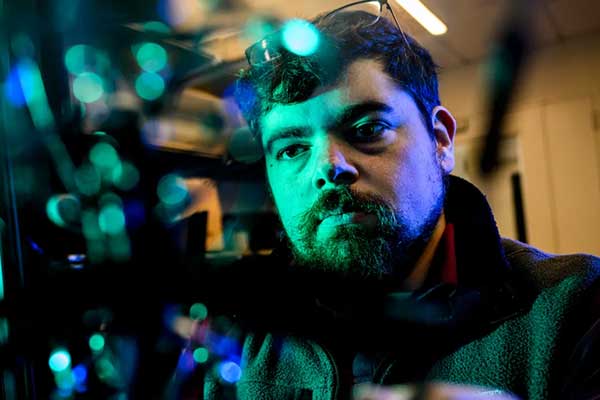New Deployable Structures Create Artificial Gravity Space Habitats

MIE Assistant Professor Jeffrey Lipton and his research team have worked on developing new deployable structures that can be used to create artificial gravity space habitats for astronauts.
This article originally appeared on Northeastern Global News. It was published by Cesareo Contreras. Main photo: Northeastern professor Jeffrey Lipton works in his lab on the Boston campus. Photo by Matthew Modoono/Northeastern University
New deployable structures could help astronauts maintain muscle mass in space
From muscle atrophy to bone loss, astronauts face a number of health risks while in space.
It’s easy to understand why.
The human body relies on Earth’s gravity to work out muscles and support other functions.
It’s a particularly serious issue for astronauts on long missions. Just look at NASA astronauts Barry “Butch” Wilmore and Sunita “Suni” Williams, who were aboard the International Space Station for nine months. Both returned to Earth with a decrease in muscle mass, balancing issues, fluid buildup and more.
One way astronauts in space try to counteract microgravity’s negative effect is by using specialized exercise equipment, but the available options still fall short in many respects in actually preventing muscle or bone loss.
A team of researchers that includes Jeffrey Lipton, a Northeastern University mechanical and industrial engineering professor, may have just offered the best solution yet in addressing the issue — and they turned to geometry to do it.
Lipton and his colleagues have created a new class of deployable structures that could one day be used to create artificial gravity space habitats for astronauts to maintain their muscles during long-duration missions.
These high-expansion-ratio deployable structures, or HERDS, are composed of a series of triangle-shaped pop-up extending trusses, or PET, that use a scissor-based mechanism to retract and expand.
These systems are small enough — both in size and weight — to be stored compactly on a spacecraft, but are capable of expanding into a kilometer in length and function properly at high spin rates.
Lipton and his colleagues tested the HERDS in microgravity this year aboard a parabolic flight — a type of flight that simulates space travel. The trip was a test of the hardware, and also an opportunity for the team to refine the software side of things, he says.
“You need to prove you have a really good way of modeling these systems, and you can’t really model them just on Earth,” he says. “We wanted to make sure that we could build a software model that could accurately capture the dynamics and the individual eccentricities of these complex moving part assemblies.”
Read full story at Northeastern Global News